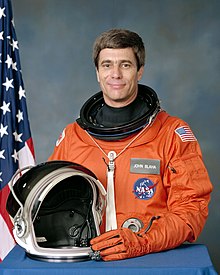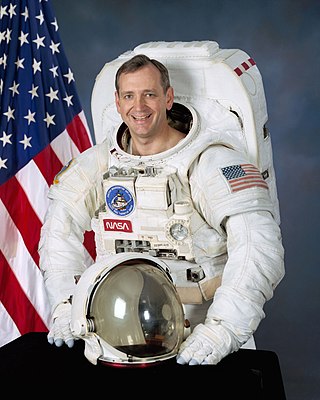
Thomas Dale Akers is a former American astronaut in NASA's Space Shuttle program.

Kenneth Dwane "Sox" Bowersox is a United States Navy officer, and a former NASA astronaut. He is a veteran of five Space Shuttle launches and an extended stay aboard the International Space Station. When he launched on STS-73 at the age of 38 years and 11 months, he became the youngest person to command a Space Shuttle.
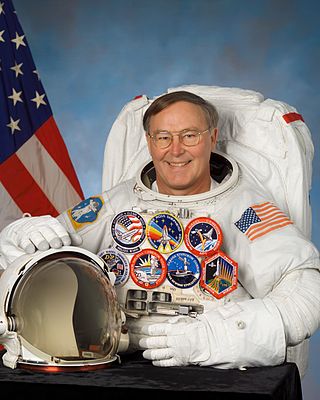
Jerry Lynn Ross is a retired United States Air Force officer, engineer, and a former NASA astronaut. Ross is a veteran of 7 Space Shuttle missions, making him the joint record holder for most spaceflights.
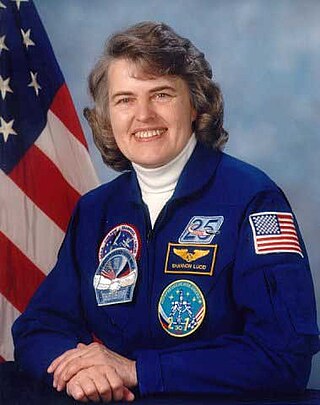
Shannon Matilda Wells Lucid is an American biochemist and retired NASA astronaut. She has flown in space five times, including a prolonged mission aboard the Russian space station Mir in 1996, and is the only American woman to have stayed on Mir. From 1996 to 2007, Lucid held the record for the longest duration spent in space by an American and by a woman. She was awarded the Congressional Space Medal of Honor in December 1996, making her the tenth person and the first woman to be accorded the honor.

Richard Oswalt Covey is a retired United States Air Force officer, former NASA astronaut, and a member of the United States Astronaut Hall of Fame.

Curtis Lee "Curt" Brown Jr. is a former NASA astronaut and retired United States Air Force colonel.

STS-76 was NASA's 76th Space Shuttle mission, and the 16th mission for Atlantis. STS-76 launched on 22 March 1996 at 08:13:04 UTC from Kennedy Space Center, launch pad 39B. STS-76 lasted over 9 days, traveled about 6,100,000 km (3,800,000 mi) while orbiting Earth an estimated 145 times, and landing at 13:28:57 UTC on 31 March 1996 at Edwards Air Force Base, runway 22.

Michael Allen Baker is a retired captain in the United States Navy, former NASA astronaut, and the International Space Station Program Manager for International and Crew Operations, at NASA's Johnson Space Center. He is responsible for the coordination of program operations, integration and flight crew training and support activities with the International Partners.

Brian Duffy is a retired U.S. Air Force colonel and a former NASA astronaut. He flew aboard four Space Shuttle missions.

Linda Maxine Godwin is an American scientist and retired NASA astronaut. Godwin joined NASA in 1980 and became an astronaut in July 1986. She retired in 2010. During her career, Godwin completed four space flights and logged over 38 days in space. Godwin also served as the assistant to the director for exploration, Flight Crew Operations Directorate at the Johnson Space Center. Since retiring from NASA, she accepted the position of professor in the Department of Physics and Astronomy at the University of Missouri.

Gregory Jordan Harbaugh is an aeronautical/astronautical engineer and former NASA astronaut. He flew on four space shuttle missions as a mission specialist with responsibilities that included Remote Manipulator System (RMS) operation and Extravehicular Activity (EVAs). He performed three spacewalks during the shuttle missions including in support of repair/refurbishment of the Hubble Space Telescope.

Terence Thomas "Tom" Henricks is a retired colonel in the United States Air Force and a former NASA astronaut. He served on four Space Shuttle missions.
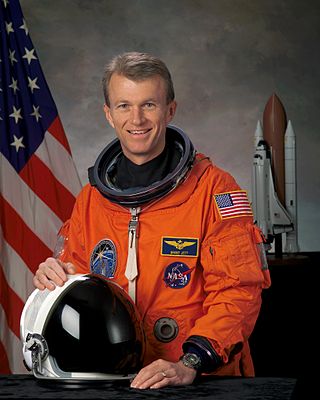
Brent Ward Jett Jr., , is a retired American naval officer and aviator, test pilot, aerospace and aeronautical engineer, and NASA astronaut.

Donald Ray McMonagle is a former astronaut and a veteran of three shuttle flights. He became the Manager, Launch Integration, at the Kennedy Space Center, Florida, on August 15, 1997. In this capacity he was responsible for final shuttle preparation, launch execution, and return of the orbiter to KSC following landings at any other location. He was chair of the Mission Management Team, and was the final authority for launch decision.

Mary Ellen Weber is an American executive, scientist, aviator, and a former NASA astronaut.

NASA Astronaut Group 13 was a group of 23 astronauts announced by NASA on 17 January 1990. The group name came from its selection of a black cat as a mascot, to play against the traditional unlucky connotations of the number 13.

NASA Astronaut Group 9 was a group of 19 NASA astronauts announced on May 29, 1980, and completed their training by 1981. This group was selected to supplement the 35 astronauts that had been selected in 1978, and marked the first time that non-Americans were trained as mission specialists with the selections of ESA astronauts Claude Nicollier and Wubbo Ockels. In keeping with the previous group, astronaut candidates were divided into pilots and mission specialists, with eight pilots, eleven mission specialists, and two international mission specialists within the group.

NASA Astronaut Group 12 was a group of 15 astronauts announced by NASA on June 5, 1987.
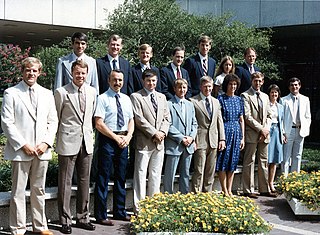
NASA Astronaut Group 10 was a group of 17 astronauts that were announced on May 23, 1984 and consisted of seven pilots and ten mission specialists. Although selected in 1984, no member of the group would fly until 1988 due to the Challenger disaster and the resulting grounding of the Space Shuttle fleet.
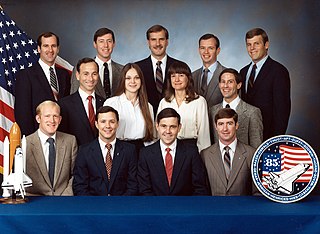
NASA Astronaut Group 11 was a group of 13 NASA astronauts announced on 4 June 1985.
